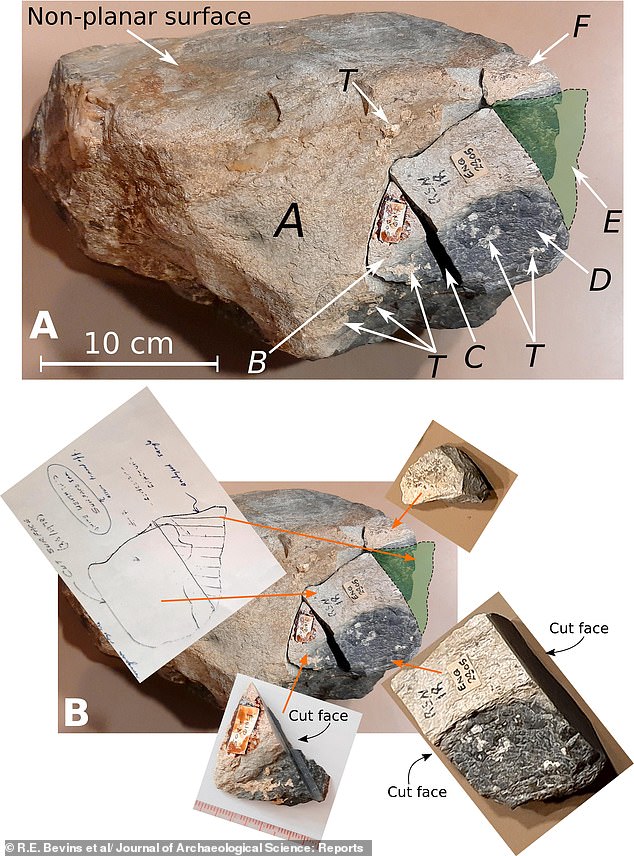
Scientists Solve 5,000-Year Mystery of Stonehenge’s Welsh Boulder Transport
Mystery of Stonehenge’s Bluestones Solved: Humans Moved Them from Wales
For centuries, scientists have debated how Stonehenge’s iconic bluestones—smaller stones dotting the site—ended up on England’s Salisbury Plain. New research confirms a long-suspected theory: Neolithic people transported these massive rocks from Wales over 5,000 years ago, not glaciers.

The Newall Boulder (left) shares a striking resemblance to the “bullet-shaped” columns at Craig Rhos-y-Felin in Wales.
Key Evidence from the Newall Boulder
A team led by Prof. Richard Bevins analyzed the Newall boulder, discovered a century ago. Using geochemical testing, they compared it to outcrops in Wales’ Craig Rhos-y-Felin, a known Neolithic quarry. The boulder’s unique foliated rhyolite composition and matching thorium/zirconium levels confirmed it originated there.
Critically, the boulder’s calcium carbonate layer—formed while buried at Stonehenge—rules out glacial transport. Glaciers would have scattered similar stones across the region, but such debris is absent.

Bluestone fragments at Stonehenge show chipping from human shaping, not glacial erosion.
Human Engineering Triumph
The study also revealed Stone 32d, previously misclassified as dolerite, is another foliated rhyolite from Wales. Transporting these 2–3 tonne stones 125+ miles (200 km) was a monumental task. Researchers argue Neolithic builders used ropes, sledges, and waterways—technologies available at the time.

Stonehenge’s bluestones form an inner circle, while larger sarsen stones create the iconic outer structure.
Debunking the Glacier Theory
While some argue glacial movement brought the stones, Bevins’ team found no supporting evidence. If glaciers were responsible, bluestones would be scattered widely—not clustered at Stonehenge alone. Geologist Dr. Brian John’s claim of glacial marks on the Newall boulder was dismissed as natural weathering.
The Altar Stone’s Scottish Surprise
A 2023 study revealed Stonehenge’s 6-tonne Altar Stone likely came from northern Scotland—620 miles (1,000 km) away. This underscores Neolithic Britain’s vast trade and cultural networks.

The Altar Stone (underneath two sarsens) may originate from Scotland, far earlier than previously thought.
Why Stonehenge?
The purpose of Stonehenge remains debated, but its construction—using stones from distant lands—likely symbolized unity. As the only Neolithic monument built entirely with imported stones, it may have served as a ceremonial site linking ancestors, the cosmos, and tribal territories.
Final Word
This research dispels the glacial transport theory, reaffirming Neolithic ingenuity. “Moving these stones was possible,” the team concludes, “and the evidence points to human determination, not ice.”

Thousands gather annually at Stonehenge to celebrate the solstice, keeping its ancient mysteries alive.
Bluestones at a Glance
- Origin: Mined in Craig Rhos-y-Felin, Wales (~3000 BCE).
- Composition: Foliated rhyolite with unique mineral signatures.
- Transport: Dragged or floated 125+ miles by Neolithic builders.
- Purpose: Likely symbolic, reflecting cultural or celestial connections.
While questions linger, Stonehenge endures as a testament to prehistoric ambition—a marvel crafted not by ice, but by human hands.


